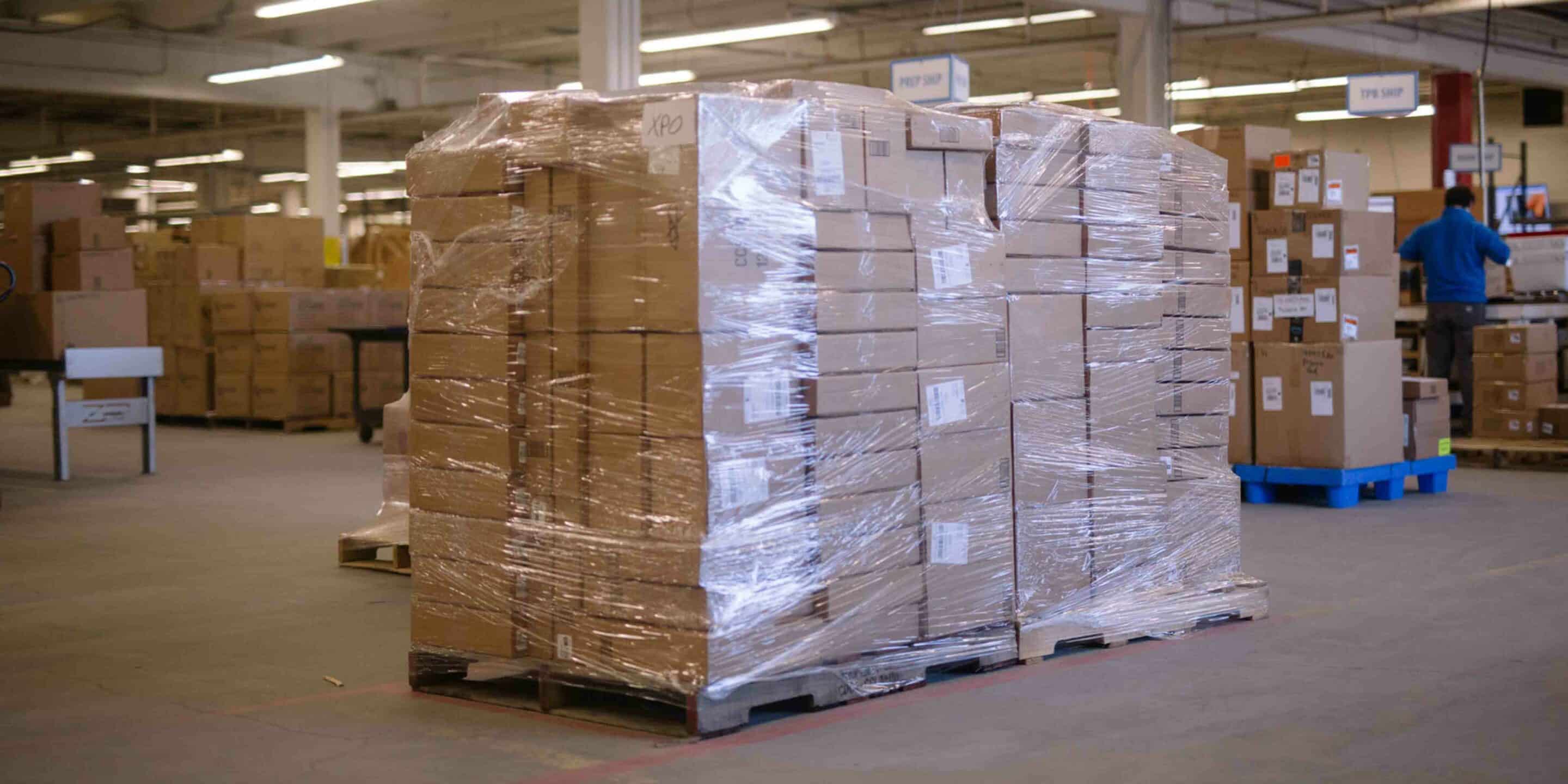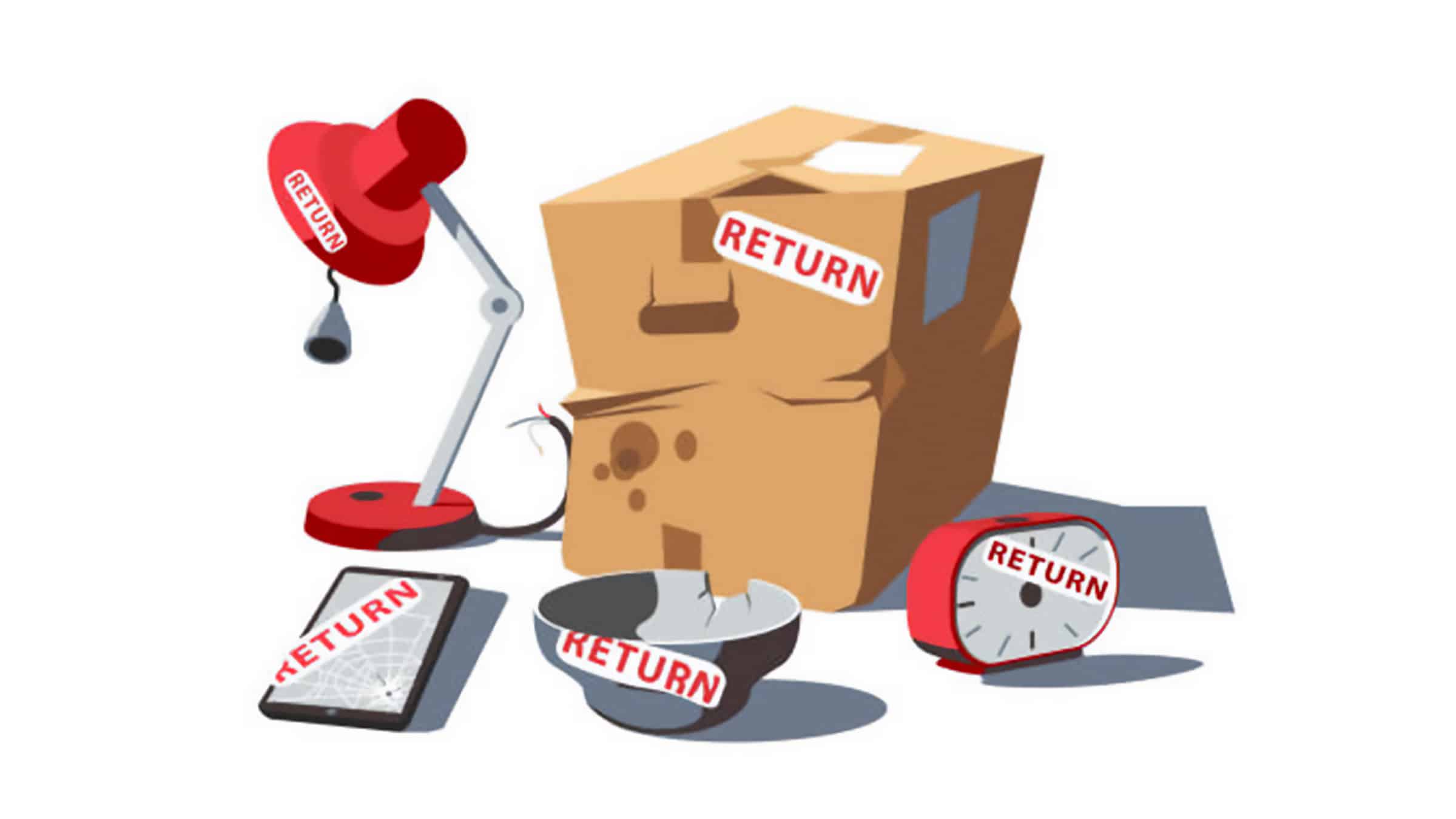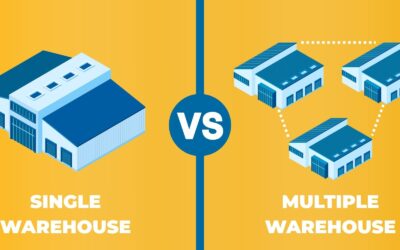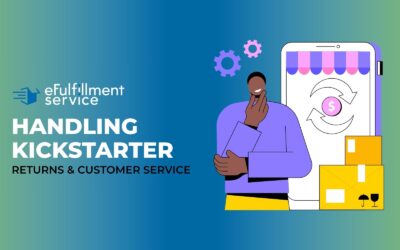
In e-commerce, a term frequently encountered yet often misunderstood is “OS&D,” an abbreviation that stands for Over, Short, and Damaged. This post is dedicated to unraveling the OS&D meaning, a crucial aspect of supply chain management that significantly influences business operations, customer satisfaction, and profitability. Whether you’re a seasoned e-commerce seller or new to the industry, understanding the OS&D meaning is essential for navigating the complexities of logistics and steering your business towards success. Join us as we dive deep into the world of OS&D, offering strategic insights, practical tips, and comprehensive analyses to transform your operational challenges into opportunities for growth.
What is the Meaning of OS&D?
OS&D in logistics refers to Over, Short, and Damaged, denoting discrepancies like excess, missing, or harmed goods in a shipment. It’s critical for claim filing and supply chain integrity.
Here’s a breakdown of each component:
- Over: This refers to situations where the recipient receives more items than were listed on the shipment’s bill of lading or invoice.
- Short: This indicates that fewer items were received than were supposed to be delivered according to the shipping documents.
- Damaged: This denotes that some or all of the items were damaged upon arrival.
OS&D is not exclusively applicable to freight companies; it also pertains to any business or entity that ships or receives goods. Whether it’s a large retail corporation, a small business, or even certain individual operations, if they are involved in the movement of goods, understanding and managing OS&D is crucial. This is because accurate tracking and handling of overages, shortages, and damages are essential for inventory management, customer satisfaction, and financial accounting. When a business ships its own products, it needs to ensure that the correct quantity of items arrives at their destination in good condition, just as much as a dedicated freight company does.
Need a Bit More Explanation?
Check out this video below from Freight Broker TV that goes into more detail on what OS&D means and how it can affect your business and customers:
The Impact of OS&D on Business Efficiency, Customer Satisfaction, and Profitability

The repercussions of OS&D ripple throughout the entire business, affecting everything from the warehouse floor to the end customer’s experience. Consider these statistics that illustrate the far-reaching impact of OS&D:
- Business Efficiency: Studies show that businesses spend an average of 1-3% of their total annual revenue on returns, a significant portion of which can be attributed to OS&D issues. By reducing OS&D occurrences, businesses can reclaim a substantial amount of wasted resources and time, thus improving overall efficiency.
- Customer Satisfaction: A survey revealed that over 73% of customers are less likely to order from a retailer again after receiving damaged goods. The immediacy and convenience of e-commerce mean customers have plenty of options; one bad experience can drive them to competitors.
- Profitability: The direct costs associated with OS&D, such as refunds, reshipping, and wasted inventory, are just the tip of the iceberg. Indirect costs, including customer acquisition loss, negative branding, and decreased customer lifetime value, can significantly erode profitability. Reducing OS&D incidents can thus have a profound effect on a business’s bottom line.
In summary, understanding and managing OS&D is not an ancillary part of e-commerce—it’s central to operating a successful and resilient business. By acknowledging the pervasive influence of OS&D and implementing robust strategies to manage it, e-commerce businesses can enhance operational efficiency, foster customer loyalty, and drive profitability. The following sections will delve deeper into the specific challenges in key industries and the innovative solutions that leading businesses are adopting to turn OS&D management into a competitive advantage.
What are OS&D Claims?

OS&D Claims refer to reports filed for shipments that are over (excess quantity), short (less than ordered), or damaged. They are critical in freight and logistics for reconciling discrepancies between shipped goods and received orders, ensuring accurate, intact deliveries.
The OS&D Claims Process:
The OS&D (Over, Short, and Damaged) claim process is a structured approach used in the shipping and logistics industry to address discrepancies or damages that occur during transit. Here’s a step-by-step breakdown of the typical process:
1. Discovery and Documentation
- Receiver Inspection: Upon delivery, the receiver inspects the shipment for any signs of overage, shortage, or damage.
- Documentation: If any discrepancies or damages are found, the receiver must document them. This includes taking photos, noting the condition of packaging, and detailing the nature and extent of the issues.
2. Notification
- Carrier Notification: The receiver must promptly notify the carrier of the discrepancies. This is often done through a formal notification process, which may include filling out specific forms or reports.
- Internal Notification: The receiver also informs their own company or the sender about the issue to initiate the claim process.
3. Claim Filing
- Gathering Documentation: The claimant (the party filing the claim) gathers all necessary documentation, including the bill of lading, invoice, delivery receipt, and any evidence of the discrepancy or damage.
- Filing the Claim: The claimant files a formal claim with the carrier, including all the relevant documentation and a detailed account of the discrepancies or damages, along with any requested compensation.
4. Investigation
- Carrier Review: The carrier reviews the claim to determine its validity. This may involve inspecting the returned goods, reviewing the shipping and handling process, and verifying documents.
- Adjuster Involvement: In some cases, an adjuster may be involved to assess the damage and estimate the loss.
5. Resolution
- Approval or Denial: The carrier decides whether to approve or deny the claim based on their investigation.
- Compensation: If the claim is approved, the carrier will compensate the claimant according to the terms of the shipping contract and the extent of the loss. This could involve repairing, replacing, or reimbursing for the affected goods.
- Communication: The carrier communicates the decision and any compensation details to the claimant.
6. Recovery
- Subrogation: If the carrier pays out a claim, they may seek recovery from third parties who may be responsible for the loss, such as other carriers, warehouses, or manufacturers involved in the shipping process.
Throughout the OS&D claim process, clear communication, timely action, and accurate documentation are key to ensuring a fair and efficient resolution. Both the shipper and receiver need to understand their responsibilities and rights, as well as the specific procedures outlined
The Carmack Amendment and it’s 5 Exclusions:
The Carmack Amendment is a significant piece of legislation in the United States that amended the Interstate Commerce Act of 1877. It specifically relates to liability issues in the transport of goods across state lines by carriers. Here’s a brief overview of the Carmack Amendment and its five key exclusions:

The Carmack Amendment Overview
- Purpose: The Carmack Amendment was enacted to achieve uniformity in rules governing interstate shipment, particularly concerning the liability of carriers for loss or damage to goods.
- Liability: Under the Carmack Amendment, carriers are generally liable for any loss or damage to goods they transport, unless the loss is due to one of the five legally defined exceptions. This liability is regardless of any other contracts or agreements made before the shipment.
- Claims Process: It simplifies the claims process for shippers, as they only need to prove delivery of the goods to the carrier in good condition, the arrival of the goods in damaged condition, and the amount of damage.
The Five Exclusions
The Carmack Amendment specifies five instances where a carrier might not be held liable for loss or damage:
- Act of God: This refers to natural disasters or occurrences that are outside human control, such as floods, earthquakes, or lightning strikes. If such an event causes the damage or loss, the carrier may not be liable.
- Public Authority: If a government or public authority causes the loss or damage through quarantine, blockade, or legal restriction, the carrier may be exempt from liability.
- Act or Default of the Shipper: If the loss or damage is due to the shipper’s own actions or negligence, such as improper packing or incorrect labeling, the carrier might not be held responsible.
- Public Enemy: This refers to hostile acts by a government or belligerent military force, such as war, invasion, or civil war, which can exempt the carrier from liability.
- Inherent Vice or Nature of the Goods: Some goods are naturally prone to spoilage, deterioration, or damage without any negligence on the part of the carrier. If the loss or damage is solely due to the natural properties of the goods, the carrier might not be liable.
Impact of the Carmack Amendment
The Carmack Amendment has had a substantial impact on the transportation and logistics industry in the United States. It has standardized the liability of carriers across states, providing a more predictable and straightforward legal framework for resolving disputes over interstate shipments. However, it also places a significant responsibility on carriers to ensure the safety and integrity of the goods they transport, while allowing certain defenses that recognize the limits of this responsibility. Understanding the nuances of the Carmack Amendment is crucial for shippers, carriers, and legal professionals involved in the transport of goods across state lines.
Interested in Reducing OS&D Claims?
Contact us and we’ll tell you how we can improve your fulfillment experience with a 3PL fulfillment service.
Examples of Real-World OS&D Situations:

Case Study 1: Apparel Industry – “The Case of the Mismatched Merchandise”
Background:
A mid-sized apparel company, “Glamour Threads,” experienced a significant OS&D issue during their peak season. They had ordered a large shipment of designer dresses and accessories for the upcoming fashion season.
The Incident:
Upon receiving the shipment, the inventory team noticed several discrepancies:
- Over: An additional 50 units of a dress not ordered were delivered.
- Short: 100 units of a high-demand accessory were missing.
- Damaged: Several luxury dresses arrived with tears and stains.
Impact:
- Financial Losses: The company faced immediate financial losses from the damaged and missing items, amounting to tens of thousands of dollars.
- Customer Dissatisfaction: Delay in fulfilling customer orders led to negative reviews and a drop in customer satisfaction.
- Reputation Damage: The brand’s image was tarnished due to the inability to stock popular items and the delivery of damaged goods.
Resolution:
- Claims and Reconciliation: Glamour Threads filed OS&D claims with their carrier and supplier, leading to partial reimbursement.
- Process Improvement: The company overhauled its receiving process, introducing stricter quality controls and better communication with suppliers.

Case Study 2: Bookstore Chain – “The Tale of the Tattered Texts”
Background:
A regional bookstore chain, “Page Turners,” ordered several thousand books to stock up for the back-to-school season, including popular textbooks and literary works.
The Incident:
- Damaged: A significant portion of the shipment arrived water damaged due to improper handling and packaging during a rainstorm.
- Short: Several boxes of a new bestselling novel were missing, presumed stolen or lost in transit.
Impact:
- Sales Loss: The damaged and missing books resulted in lost sales, particularly impacting the crucial back-to-school period.
- Operational Disruption: The team had to spend considerable time sorting through damaged goods and handling customer complaints.
Resolution:
- Vendor Negotiation: Page Turners worked with the shipping company to secure compensation for the damaged goods.
- Preventive Measures: They revised their supplier agreements to include stricter packaging guidelines and started using waterproof containers for shipments.
How a 3PL Can Help Reduce OS&D Claims

A Third-Party Logistics provider (3PL) is a company that offers logistics services to support various aspects of shipping and handling goods. Here’s how using a 3PL can help reduce OS&D claims:
- Expertise and Experience: 3PLs are specialized in logistics and often have robust systems and processes to minimize errors. Their expertise can lead to better packing, handling, and shipping methods that reduce damage and mistakes.
- Quality Control: Many 3PLs provide quality control checks at various points in the supply chain. They can inspect goods before shipping, ensuring that only items in good condition are sent out and properly accounted for.
- Advanced Technology: 3PLs typically use advanced technology for inventory management, shipping, and tracking. This technology can include real-time tracking of shipments, better inventory management systems, and automated processes that reduce human error.
- Carrier Relationships: 3PLs often have established relationships with various carriers and can select the most reliable options for shipping goods. They might also have more clout to resolve issues quickly if something does go wrong.
- Claims Handling: In case of an OS&D situation, 3PLs often have dedicated staff and procedures to handle claims efficiently. They can take the lead in investigating issues, communicating with carriers, and resolving the claim.
By reducing the likelihood of over, short, and damaged goods, 3PLs help maintain the integrity of the supply chain, ensure customer satisfaction, and can save businesses from the costly and time-consuming process of handling OS&D claims. The efficiency and expertise of a 3PL can significantly mitigate risks associated with shipping and handling, making them a valuable partner for businesses looking to streamline their logistics and reduce operational hassles.
Best Practices for Minimizing OS&D

Effective OS&D management is crucial for maintaining customer satisfaction, reducing losses, and ensuring a smooth supply chain. Here’s a checklist of best practices specifically tailored for e-commerce businesses:
1. Preventive Measures
- Accurate Documentation: Ensure all shipping and receiving documents are accurate and up-to-date. Double-check quantities, descriptions, and conditions noted.
- Quality Packaging: Use robust packaging materials and methods suited to the goods being shipped to minimize damage.
- Clear Labeling: Clearly label all items and boxes with appropriate handling instructions (such as shipping fragile items), destinations, and tracking information.
2. Training and Procedures
- Staff Training: Regularly train staff on proper handling, packaging, and documentation procedures.
- Standard Operating Procedures (SOPs): Develop and enforce SOPs for receiving, unloading, and inspecting shipments.
3. Receiving Process
- Prompt Inspection: Inspect shipments immediately upon receipt for over, short, or damaged items.
- Accurate Record-Keeping: Document any discrepancies or damages in detail, with photographs and written descriptions.
- Timely Reporting: Report any OS&D issues to the carrier and your own customer service team promptly.
4. Technology Utilization
- Inventory Management Systems: Implement an inventory management system to track and manage stock levels, orders, and shipments.
- Automated Alerts: Use technology to create alerts for inventory discrepancies or shipment delays.
5. Carrier Management
- Carrier Selection: Choose carriers with good reputations and track records. Consider insurance options and reliability.
- Carrier Communication: Maintain clear and constant communication with your carriers. Provide feedback on any issues.
6. Claims Management
- Established Claims Process: Have a clear process for filing and following up on claims with carriers or insurance.
- Document Everything: Keep thorough records of all communications, claims, and resolutions for future reference.
7. Continuous Improvement
- Regular Audits: Conduct regular audits of your OS&D processes to identify and address recurrent issues.
- Feedback Loop: Use OS&D incidents as learning points to continuously improve your processes and training.
8. Customer Service
- Proactive Customer Communication: Inform customers promptly of any issues and the steps being taken to resolve them.
- Resolution Options: Offer solutions like replacements, refunds, or discounts to maintain customer satisfaction.
By adhering to these best practices, e-commerce businesses can significantly reduce the incidence of OS&D issues, manage them more effectively when they do occur, and maintain a positive reputation with customers and partners. It’s all about being proactive, prepared, and persistent in ensuring that every part of the OS&D process is as efficient and customer-focused as possible.
Fulfill Multi-Channel Orders Effortlessly!
Summary – The Meaning of OS&D: Impacts & Insights

This comprehensive guide delves into the critical realm of Over, Short, and Damaged (OS&D) in e-commerce logistics, a pivotal aspect often overlooked but central to operational success. OS&D encompasses the discrepancies in shipment such as overages, shortages, and damages, directly impacting business efficiency, customer satisfaction, and profitability. Through detailed explanations and real-world examples, the post illuminates the multifaceted effects of OS&D on the supply chain, emphasizing its significance in inventory management, customer experience, and financial accounting. It underscores that understanding and effectively managing OS&D is not a peripheral task but a core strategy for thriving in the competitive e-commerce landscape.
Key Takeaways
- OS&D’s Impact: OS&D affects all facets of e-commerce, from inventory accuracy to customer trust and bottom-line profitability. Businesses spend 1-3% of their annual revenue handling returns, much due to OS&D issues. Proactively managing these can significantly reclaim wasted resources and enhance operational efficiency.
- Customer-Centric Approach: Over 73% of customers are likely to switch retailers after receiving damaged goods. Ensuring accurate and intact deliveries is critical in maintaining customer loyalty and brand reputation.
- Strategic OS&D Management: Adopting best practices such as accurate documentation, quality packaging, thorough staff training, and robust carrier management can drastically minimize OS&D occurrences. Leveraging technology for inventory management and automated alerts further fortifies this approach.
- Claims and Compliance: Understanding the claims process, including the Carmack Amendment and its exclusions, is crucial. This knowledge equips businesses to navigate the legal landscape of interstate shipments and resolve disputes efficiently.
- Partnering with 3PLs: Third-Party Logistics providers can significantly reduce OS&D incidents through their expertise, advanced technology, and established carrier relationships. They also streamline the claim handling process, reducing the operational burden on businesses.
- Continuous Improvement: Regular audits, feedback loops, and customer-focused resolutions are key to evolving OS&D processes. These practices not only address immediate issues but also contribute to long-term operational resilience and customer satisfaction.
Embracing these insights and strategies will transform OS&D management from a daunting challenge into a competitive advantage, steering e-commerce businesses towards sustained growth and excellence.
Simplify Ecommerce with a Fulfillment Service!
FAQs: OS&D Meaning
What is an OSD report?
An OSD Report refers to an Over, Short, and Damaged Report in logistics and shipping. It's a document created when discrepancies in shipments are identified. The key components of an OSD Report include:
- Identification: A list of the items and quantities that are over, short, or damaged.
- Documentation: Evidence of the discrepancies, such as photographs, descriptions of damage, and relevant shipping documents like the bill of lading.
- Notification Details: Records of communication with the carrier or shipping company regarding the discrepancies.
- Resolution Steps: Actions taken to address the issues, including claim filings, adjustments to inventory, and any compensatory measures.
OSD Reports are essential for logistics management, providing a formal record of discrepancies and serving as the basis for resolving shipment issues and filing claims. They are crucial for auditing purposes, claims processing, and improving supply chain operations.
What is OS and D in Logistics?
OS&D stands for Over, Short, and Damaged, a term commonly used in the logistics and shipping industry. It refers to the discrepancies found between shipped goods and received goods in terms of quantity and condition. Specifically:
- Over: More items are received than were listed on the shipping documents.
- Short: Fewer items are received than were listed on the shipping documents.
- Damaged: Items are damaged or in a worse condition than expected upon arrival.
The identification and resolution of OS&D issues are critical for maintaining supply chain integrity, customer satisfaction, and accurate inventory management.
What is an OS&D Clerk?
An OS&D Clerk, or Over, Short, and Damaged Clerk, is a logistics professional responsible for managing and resolving any discrepancies in shipments. Their duties typically include:
- Reporting Discrepancies: Identifying and documenting any overages, shortages, or damages in shipments.
- Communicating with Stakeholders: Coordinating with warehouse staff, carriers, and customers to report and resolve OS&D issues.
- Filing Claims: Preparing and submitting claims to carriers or insurance for reimbursement or resolution.
- Maintaining Records: Keeping detailed records of all OS&D incidents, communications, and resolutions.
The role of an OS&D Clerk is crucial for minimizing financial losses, ensuring customer satisfaction, and maintaining accurate inventory records.




0 Comments